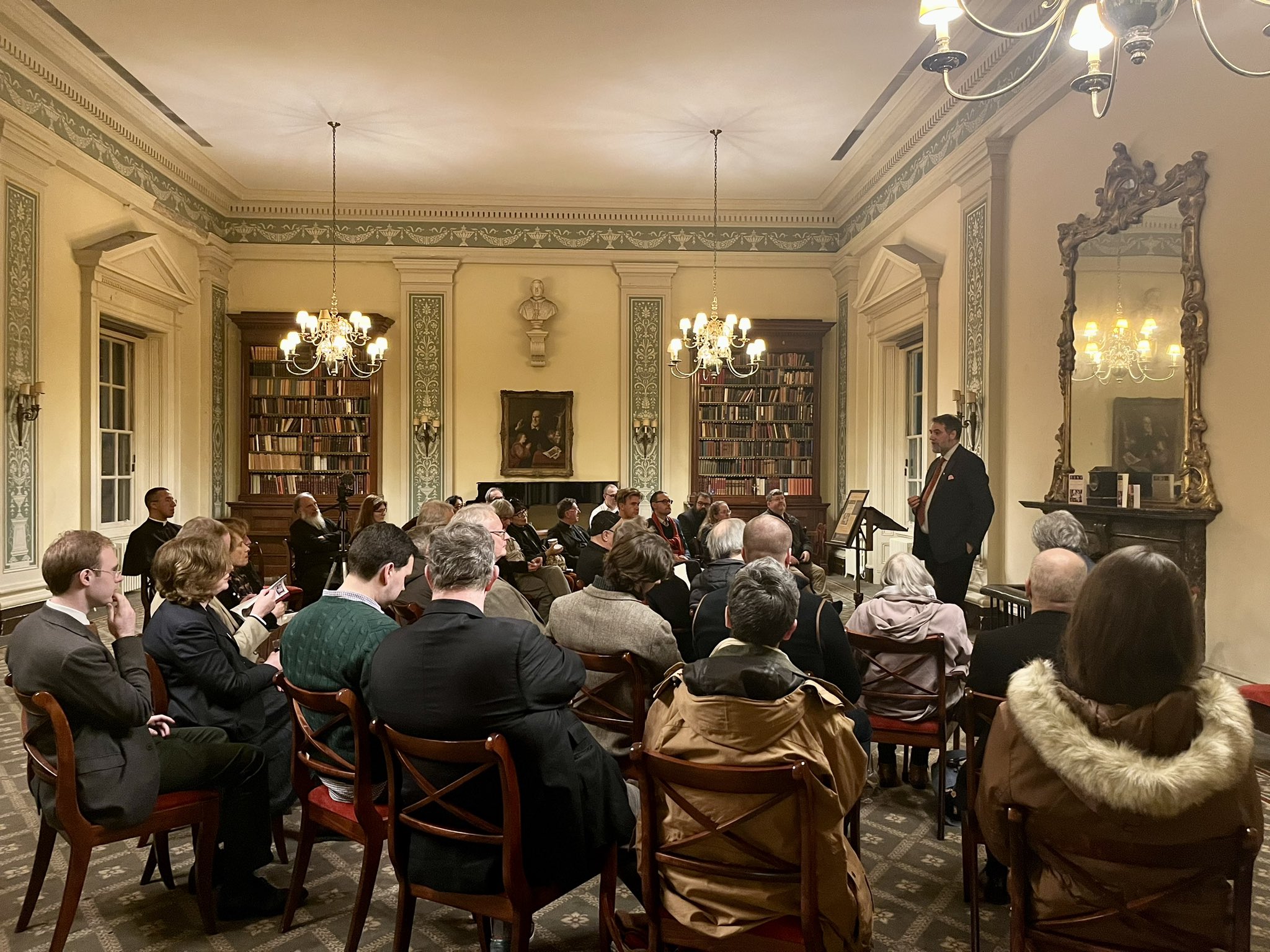<strong>The Latin Mass and the Intellectuals: Petitions to Save the ancient Mass from 1966 to 2007</strong>
Dr Joseph Shaw, president of the Latin Mass Society, launched his third book to an eclectic crowd of traditional priests and laypeople at the Brompton Oratory last week.
<em>The Latin Mass and the Intellectuals: Petitions to Save the Ancient Mass from 1966 to 2007, </em>edited by Dr Shaw, contains contributions from multiple authors, ranging from bi-ritual liturgically-minded priests to professorial academics and musicians.
The book, in many ways, does what it says on the tin. As can be expected, its scope details the widespread intellectual opposition and critique of the reform of the ancient Roman liturgy in the wake of the Second Vatican Council and the subsequent recommendations of Annibale Bugnini’s trigger-happy pontifical commission.
The opposition in focus is exemplified by a series of petitions among the intellectual classes in 1966, 1971, 1995, 1998, 2006, and 2007 which attained the support of a surprising number of titan figures. It is these that the publication both includes and gives significant contextual attention to.
Yet, by deeply reflecting upon the unique and varied reasons offered by such intellectuals as Agatha Christie, TS Eliott, WH Auden, and even Marcel Proust in their own words, it goes far beyond a mere cursory archival chronicle of who said what and when, but rather examines on theological, philosophical, aesthetic and human grounds how such figures may have a thing or two to still contribute today.
It is a momentous work, exhaustively referenced and well tied-together, with a foreword by German award-winning writer Martin Mosebach, whose landmark book on the new liturgy remains a leader in the genre.
As we sat down, after some nibbles and glasses of wine, in one of the luxurious upper rooms in the Oratory’s complex in South Kensington, the work’s principal editor began with a few quips and remarks.
“The book is quite a disparate collection of material,” confessed Dr Shaw. “We were all in the shadow of an earlier group of people… the petitioners themselves.”
Acknowledging that the book includes more than a few major contributions by dead authors, he joked that “they’re very easy to work with”.
“I like to think of this book as a magnificent party… but perhaps it is more like a concert, where each contribution can be heard, themes explored, ideas developed– and tensions resolved,” he explained.
Recognising the book to be too large and too broad to penetrate in any great depth over the course of an hour, Dr Shaw chose to attempt to particularly address and demystify the apparent paradox of how modernist intellectuals, writers and artists could have been so actively opposed to the "modernising" reform of the Tridentine liturgy, which is today so often associated with theological and ecclesiastical traditionalists.
The numbers of folk falling into this category were not insignificant– many are household names and some have been already mentioned above. However, what is surprising, explained Dr Shaw, is that the charm of the ancient Mass even extended to Catholics “well on [their] way to theological liberalism”.
To prove this point, he set the scene for the subsequent discussion by reciting the following incisive 1964 quote from 20<sup>th</sup> century trappist monk Thomas Merton:
It is precisely this dynamic which Dr Shaw and his fellow writers repeatedly document, expose, and analyse: that outsiders (whether artistically or religiously) to the traditional Catholic Faith were able to easily perceive the richness and spiritual value of the ancient liturgy whilst those whose possession it was disregarded it.
“Why, though, did the innovating artists want to preserve the past?” he continued.
The book explains that such modernists were leading not a revolution against traditional ideals and forms of authority (as may be thought), but were instead launching a <em><strong>counter-revolution</strong> </em>against prior intellectuals and artists who had already repudiated them.
A lion’s share of the leading intellectuals of the age were, according to the argument, responding to the crisis of modernity– defined by “the wrenching changes created by urbanisation, industrialisation, secularisation, migration, and the horrors of war”.
Such evident failings in the modern world, exposed by some of those who reflected upon them most profoundly, made it easy for an entire generation to recognise the merit in <strong><em>pre-modern</em></strong> traditions– as more attuned to human nature than the increasing uprootedness and artificiality of life and culture becoming ubiquitous in the modern age.
Indeed, the neo-medieval infatuation among the writers and artists of late Victorian and early-mid 20<sup>th</sup> century period is undeniable. Dr Shaw and his fellow writers collect and flesh out the more substantive critiques which underpinned their sentiment– which are frequently closely bound up with their explicitly stated opposition to the modernisation of the liturgy.
Published by Arouca Press<em>, </em>and printed in its first edition at 383 pages, the work is available at around £19.75 and will serve as an important contribution to the enduring debate around liturgy in the Catholic Church, and in defence of an “abrogated” Mass that simply won’t go away.
You can buy the book <a href="https://lms.org.uk/product/latin-mass-and-intellectuals-petitions-save-ancient-mass-1966-2007"><strong>here</strong></a>.
(Photos: Arouca Press, Latin Mass Society)



